From Drunken Mess to Daily Bliss: My 90-Day Transformation
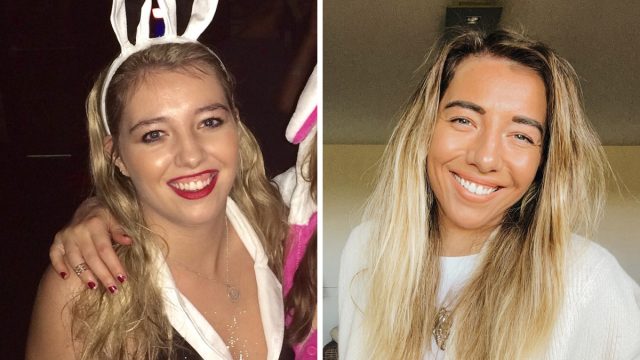
I went sober just over two years ago, and I managed to fall in love with myself and create a whole new perspective on life. I am now embracing the clarity, strength, and joy of the sober journey and believe that anyone can do it, too!
I have been helping people to get back into control of their drinking and develop a better relationship with alcohol by organizing Dry January and Sober October challenges and I've loved how much it has helped them. So, I wanted to share my story and some tips for stopping drinking and stick to your sober goals.
From Mental Health Problems to Addiction
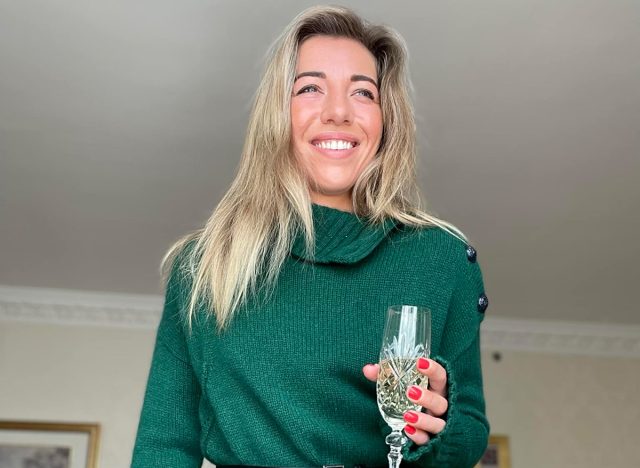
I'd struggled with my mental health from the age of 8. I suffered from severe depression and anxiety and it played havoc throughout my childhood. I struggled with confidence and motivation and was trying everything I could to feel happy.
This meant turning to alcohol and drugs to help me have a good time and relax in social situations. I was drinking and using boost my mood, make me feel better and mask the feelings of not fitting in, of not being good enough. But it wasn't working and in fact, my anxiety was getting worse and worse the more drugs I did and the more alcohol I drank.
I was that cringy person that nervously talked too much, always leaving conversations worrying about what I said or how I came across. I had a bad neck and tight shoulders because I always had my head down and never stood up tall, I was awkward and felt ashamed of who I was and didn't love myself at all.
During COVID I was drinking my way into oblivion. I knew I needed to change something because I was losing hope and because I wanted to be an example to others and live the healthy life that I was trying to inspire in my clients.
How Exercise Saved Me
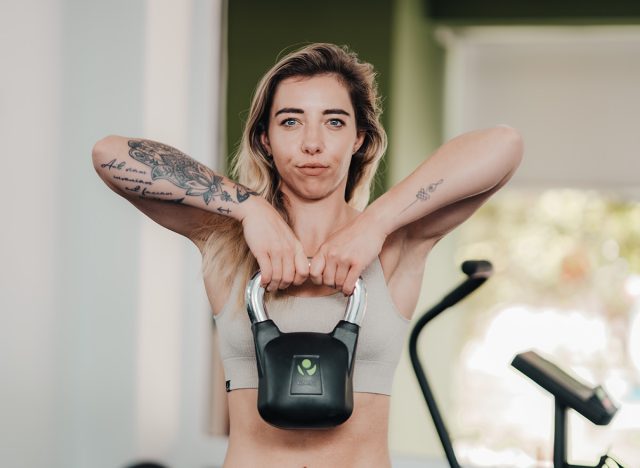
I got into the fitness industry about 7 years ago now and I discovered that it really helped with my anxiety. I was still struggling on and off over the years but fitness developed something inside of me that gave me the strength to eventually change my life for good.
Exercise is one of the biggest things you can do to make yourself feel amazing. It's hard to do it when you feel like crap, but at least getting outside for a walk can make all the difference. For me, it was resistance training that really made a difference. It helps to create a stronger mindset, resilience and mental toughness as well as support bone health, mobility and fat loss. It made me feel strong and powerful and think about how to fuel my body properly so I could achieve more.
I found a positive community in the gym and little by little I started to love myself.
Loving yourself starts with taking care of yourself. It starts with baby steps just doing one small thing each day for your wellbeing whether that's brushing your hair putting on some nicer clothes that don't make you feel like a slob. These things make a HUGE difference in the long run.
With regular exercise and good nutrition I felt the clouds starting to lift and I could start to see more clearly. I realized that even with all the good things that I was doing for my body and mind, the drinking and drugs were holding me back and that I had to stop to really be the person I wanted to be.
Thanks to my workouts I had developed an inner strength, discipline and resilience and I knew that I could stop and had to stop for good. My first goal was to do three months, but in the back of my head I knew I wanted to go six months sober, and here I am feeling better than ever and helping overs find their way to their healthiest and happiest self.
RELATED: 7 Pilates Moves for Core Strength You Can Do at Home
How I Stopped Drinking
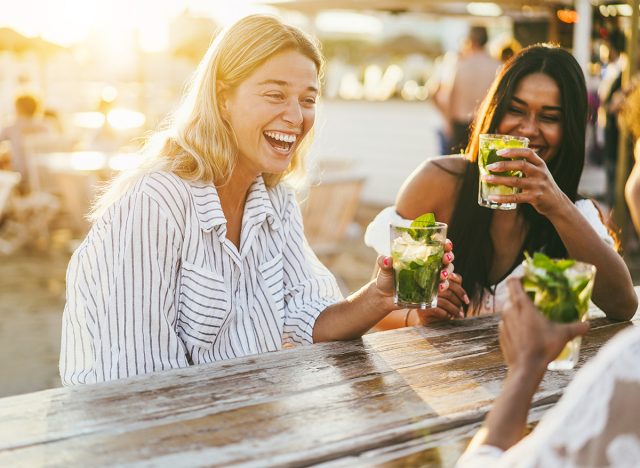
I tried the whole no alcohol thing for years, doing Dry January and Sober October for a few years, but always falling back to my old bad habits before long. But eventually I realised I had to stop forever, as I wasn't happy and I was losing hope. The thing that worked well for me when I went sober was I didn't give myself the option of failing. I just said to myself – I AM DOING THIS.
When I went sober, I fell in love with the challenge. Every single life event or situation was a challenge to navigate sober and I had to change a lot of things. I knew to make this work I needed to look at my drinking patterns / triggers. So, step one was to ask myself what situations arise that usually lead me to drink and those are usually going to be the situations that cause uncomfortable feelings, like anxiety.
Step two was to try to avoid or limit putting myself in these situations until I felt like i had full control.
Step three was to prepare myself, so if I did end up in one of these situations, I knew what to do to ensure I stayed on track.
I didn't really go out into the social world until I was 3 months sober. I knew this was a turning point as it takes 90 days to build a habit, so I very much kept myself to myself for those initial 90 days. I went to work and I went home and that was it.
When I did start navigating social situations again, I just said to myself that if anything made me feel uncomfortable I could just leave that situation, take a deep breath and go home if needed.
For me, from the day i went sober I knew I couldn't drink again. It just wasn't an option, because I was in such a bad place that if I carried on, or did have a drink, things could have gotten so much worse and I didn't want to risk that.
Once that decision was made, it was much easier, as there wasn't a battle between drinking and not drinking. It was just saying I don't drink now, so I have to figure out a way to deal with all this uncomfortable stuff.
I dug deep, found my strength within, defined my WHY – the reason for going sober, and reminded myself of it every day. I knew I needed something or someone to keep me accountable, and the "I Am Sober App" is what got me through it.
I still get dark days but they are never as dark as they were and they pass much quicker. I never thought I'd be where I am today or ever thought I'd feel true happiness. I've made it my mission to help people find their strength within like I did through fitness because without it I really don't know where I'd be today.
Fast forward to today and I am now 2 years sober and loving who I am. I achieved the confidence I was looking for and have built a successful business. The best thing is that I wake up every day with a clear head and excited for what's to come.
What is the Key Lesson Here
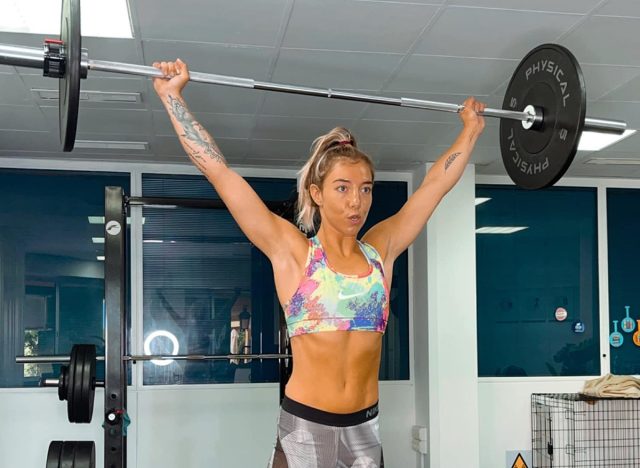
The key lesson is that if you're feeling like you have no motivation and you don't know where to turn, there's always a way.
Start by setting intentions. Think about your goals for your drinking, what positive changes are you hoping to see in your life and why you're deciding to make a change to your drinking habits. Maybe you want to stop completely, have a certain number of dry days per week, or cut down the binges. Whatever it is, commit to it and write it down and put it somewhere visible, to keep you on track.
Understand your habits and triggers and plan for how you'll overcome these triggers and break those bad habits. Know that it's ok to decline invitations, say no to alcohol or leave an event early! Set your boundaries and then don't be afraid to follow through, your real friends will understand.
Find resources and communities that can help you stay on track. I found the "I Am Sober" App very useful. Alcohol Change UK also offer excellent communities and resources through their Dry January and Sober Spring Challenges. They send daily emails, there are Facebook groups which offer community support and advice during the challenges and beyond, and their Try Dry app is excellent for keeping you on track. Of course, AA is also an excellent network if you have a problem with alcohol and you want to stop for good.
Do what feels right, don't do what doesn't and make sure you stay true to you. Know you aren't hurting anyone's feelings, because your feelings and your wellbeing is way more important!
RELATED: This Plan Is How to Lose 5 Percent Body Fat In 2 Weeks
Be Kind to Yourself
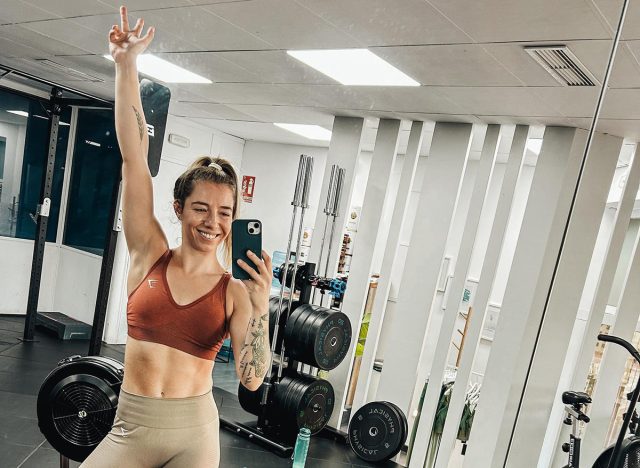
Once you've stopped drinking, then start to look after yourself more and be kind to yourself, listening to what your body needs. Drink at least two litres of water a day, make sure you're getting enough sleep and try not to have too many days in a row where you aren't getting at least 7 hours.
Eat a balanced diet including fruits and vegetables, lean proteins, healthy fats, and whole grains. You should be trying to eat the colours of the rainbow to get the nutrition you need and eat yourself happy.
Aim for at least 30 minutes of moderate exercise most days of the week. Any form of exercise is good and it's just about finding things that you enjoy, that keep you active and make you feel better. I'm very pro resistance (strength) training because it helps to create a stronger mindset, resilience and mental toughness as well as support bone health, mobility and fat loss.
However, anything that gets you moving is great. Try to walk 8000 steps every day and get involved with activities like dance classes, rollerblading, cycling and swimming. Running is another great exercise and there are some excellent programmes like Couch to 5K, or Just Run, which will help you to get started with running and improve your fitness.
You can do it!
Arabella Featherstone chronicles her sober journey and offers health and fitness tips and motivation on her Instagram channel @feathersfoodfit or on her website which features her free e-book Unlocking the Strength Within.




